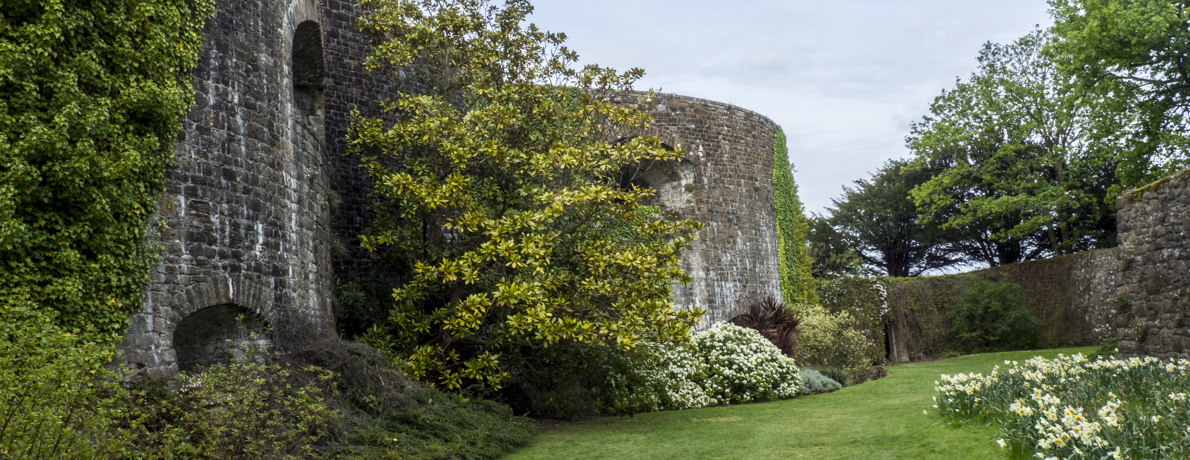
Deal on the coast of Kent has one of the prettiest, unspoilt sea-fronts and a history as colourful as the buildings that stretch along it.
I approached Deal along the old, narrow Cinque Ports Road that hugs the coastline. Deal was not one of the original five Cinque Ports but was later included as a limb of neighbouring Sandwich. As soon as I turned on the promenade I felt compelled to stop and enjoy the beautiful vista in front of me. The extensive pebble beach merged with the blue sea on one side. Pastel painted residential buildings and hotels lined the sea front on the other. The sight of Deal Pier stretching out to sea compelled me to stop and take a walk along it

The Pier at Deal in Kent
Deal Pier
There has been a pier on the sea front at Deal since 1838. The original pier was shorter than intended and was used as a docking point for seamers until it was thrown onto the beach by a storm in 1857. It was sold for scrap. A second pier was built in 1861 using stone from the ruined Sandown Castle. This was a much longer pier and included a steamer landing stage and a tramway to transport goods and luggage. Seating was available along its full length and there were two toll houses at the entrance. The addition of a pavilion at the top of the pier meant it became a popular venue for concerts and fishing. The pier was badly damaged by ships colliding with the structure during storms in 1864 and 1873. On both occasions repairs were effected and it continued to be used as a popular amenity. It was bought by Deal Town Council in 1920. This pier suffered serious damage during the Second World War and had to be demolished. Only the toll houses survived. The locals missed their pier and a third pier, the one that exists today, was built in 1954. The toll houses were knocked down when this pier was built.
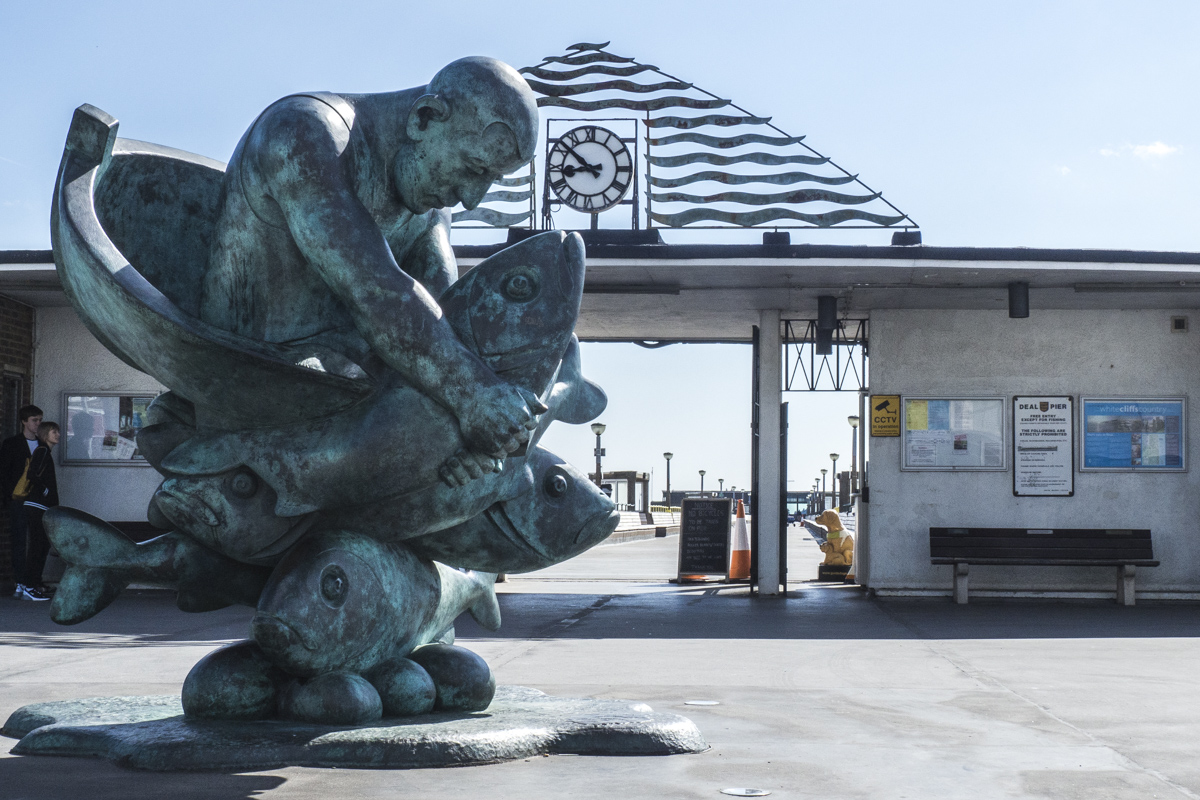
The Entrance to the Pier in Deal, Kent
It was the first pleasure pier to be built since 1910 and is still popular today. At the entrance is a bronze sculpture, Embracing the Sea, by the English sculptor Jon Buck. I walked the length of the pier enjoying the fresh breeze and lovely views back to the sea front of Deal behind me. The pier head was busy with fishermen on the lower decks – the pier is recognised internationally as a fishing venue. A bright, modern café was doing a brisk trade on the top deck. Due to a miscalculation the third, lowest deck is permanently submerged in water.
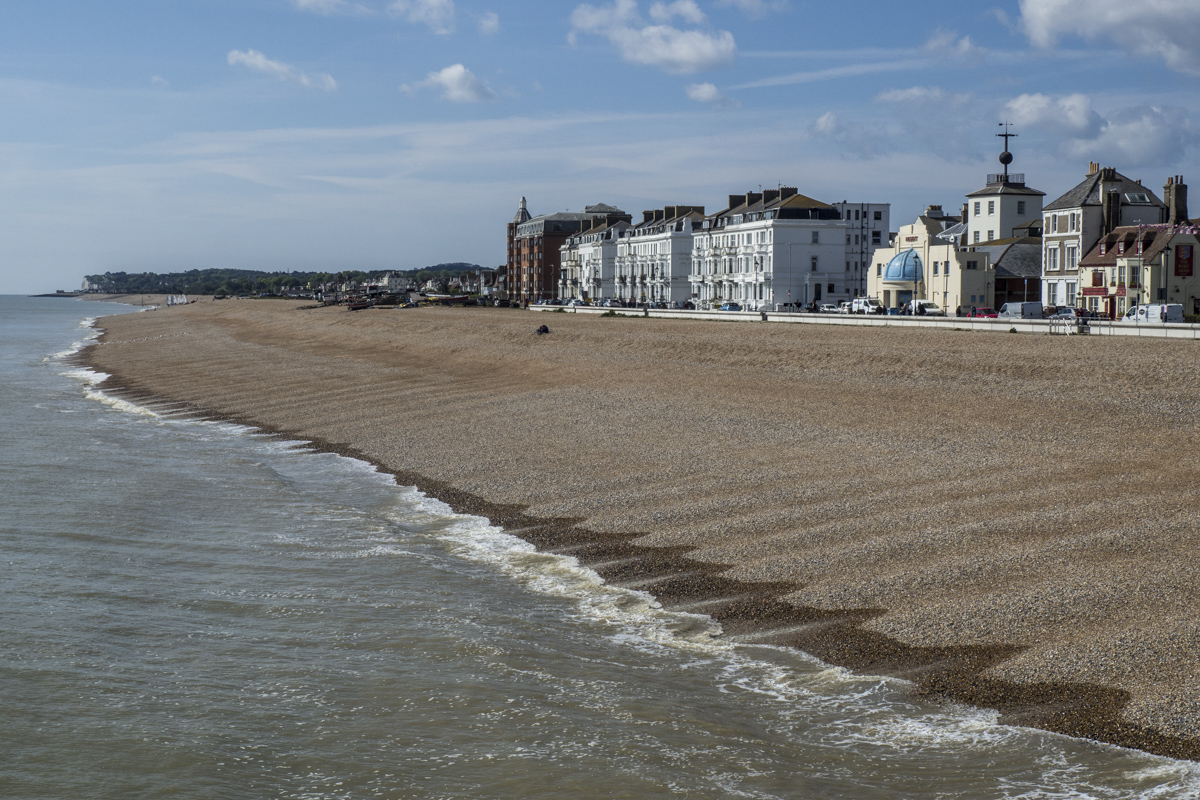
The View from the Pier on the Sea Front of Deal in Kent
The Timeball Tower Museum in Deal
Back on the sea front I was drawn towards a tall, narrow building whose roof is adorned with a tall mast. The iron ball resting at the bottom of the mast is a time-ball and it is this that gives its name to the building, the Time-Ball Tower. This building houses the Time-Ball Tower Museum. The time-ball was the third of three systems established in Deal to send messages along the coast and also to ships at sea. The first was the shutter telegraph, the second was the semaphore tower, a more versatile means of sending messages to ships at sea. This was built in 1816 and was converted into the Time-Ball Tower we see today. When the semaphore system was abandoned the tower fell into disuse until 1853 when it was chosen as a time-ball station. Ships needed accurate time to aid accurate navigation and the first time-ball was erected by the Royal Observatory to give time to ships in the River Thames. Other towers were set up around the country and one of the first was in Deal due to the importance of its large off-shore anchorage, the Downs The iron ball ran up and down the mast on the roof. At 12:55 each day, the ball was raised half-way to warn ships to be ready to correct their chronometers. At 12:58 it was raised to the top of the shaft and at exactly 1 pm it was dropped automatically by an electrical current from Greenwich. The tower was closed in 1927 when the time-ball became obsolete with the arrival of the wireless. The tower has been restored and opened as a museum in 1985. One again the time-ball travels up and down its mast, not just once a day but every hour when the museum is open in the summer.

The Timeball Tower Museum in Deal
The Old Town of Deal
Narrow alleyways lead from the sea front into the lovely, narrow streets of the old town of Deal. In particular Middle Street and South Street. Sadly, this area suffered a lot of damage during the Second World War but some parts remain unscathed and a testament to the early prosperity of this little town. Before the advent of the steamship sailing ships would seek shelter in the stretch of water known as The Downs situated between the shore and the Goodwin Sands. As they lay at anchor waiting for favourable conditions to continue their journey the Deal boatmen would ferry supplies across the water to them. The locals also made money from the recovery of ‘slipped anchors’ – cut loose by ships in trouble on the sands – which they sold at auction. And, of course, smuggling was also a popular activity here. It started in medieval times following a ban on the export of high-quality English wool and reached a peak during the eighteenth century when everyone in the town seemed to be involved in ‘running’ spirits, tobacco, tea, lace, silk and fancy goods. Fishing became increasingly popular after the mid nineteenth century when smuggling was virtually ended by the Coastal Blockade. Fishing boats still work from Deal today but many of them are chartered by visitors to this now popular seaside resort.
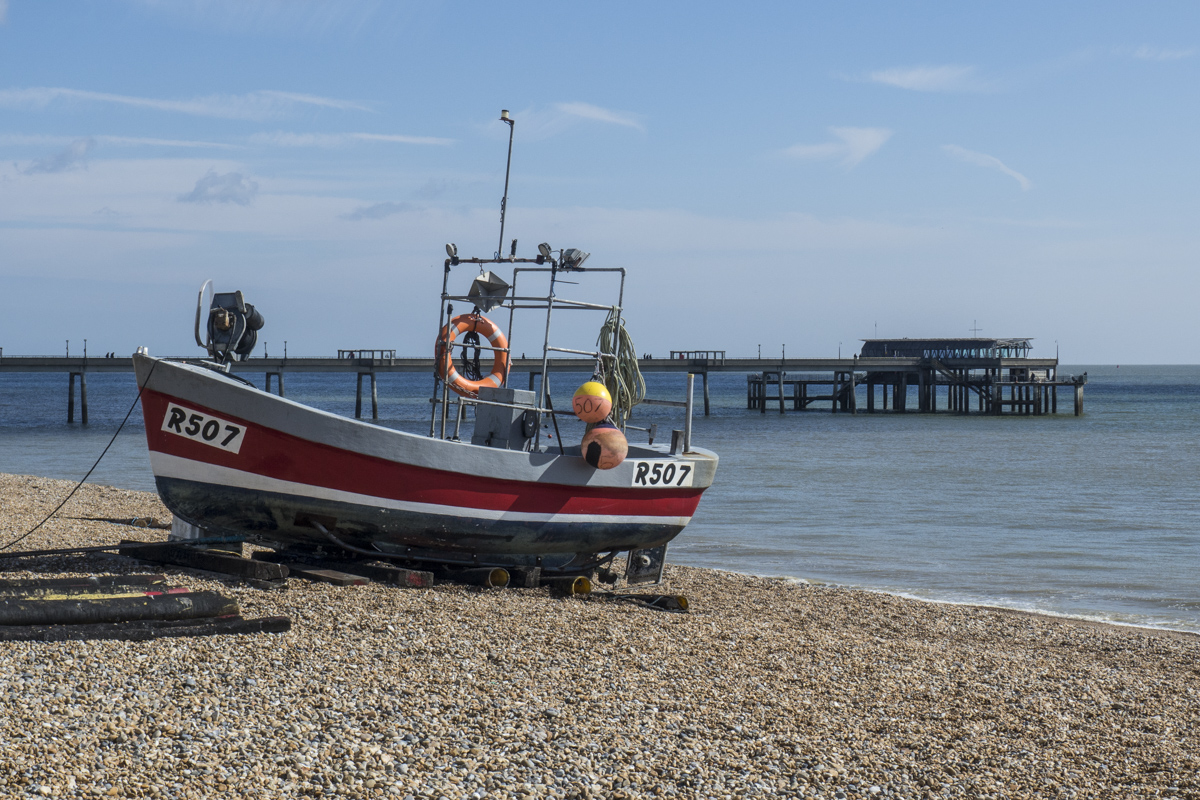
Fishing Boat on the Beach at Deal in Kent
The Deal Maritime and Local History Museum
Anyone interested n the history of Deal will be charmed by the Deal Maritime and Local History Museum. This small museum is housed in an old industrial building on the site of a former market garden and maintained, developed and run entirely by volunteers. Eileen was the volunteer on duty when I visited and she gave me a brief history of the museum. The exhibits occupy two floors in the main building, an outhouse and the garden between the two. There are several boats on display including a Deal boat, the Saxon King that was built in 1891 and a Dunkirk “Little Ship.” There is also an interesting collection of model boats and some smugglers tales, accounts of lifeboat rescues and ships wrecked on the treacherous Goodwin Sands, just three miles offshore.
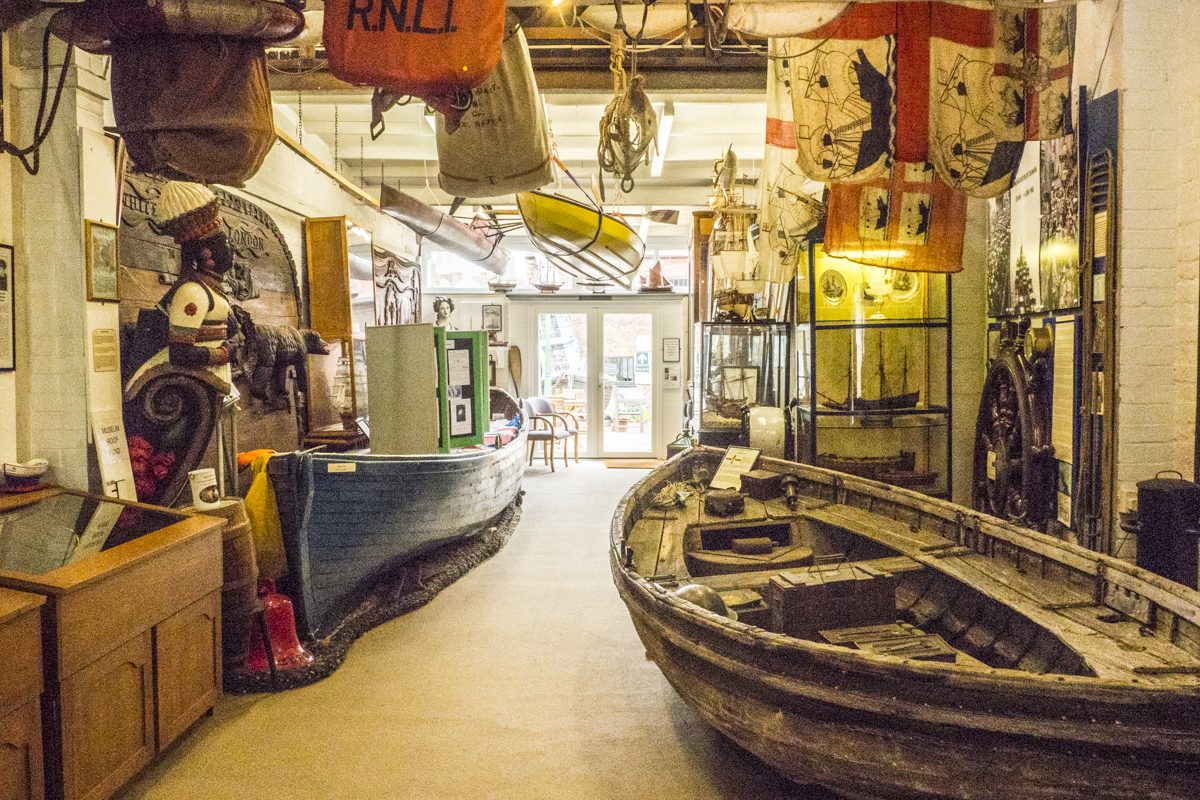
The Deal Maritime and Local History Museum in Deal, Kent
The Kent Moving Image Museum in Deal
Bizarrely Deal does not have a cinema but it does have the Kent Museum of Moving Image. Occupying a small, two-storeyed house in a residential street the clever layout of its four exhibitions belies the size of its home. This non-profit making museum was established in 2018 by David Francis a renowned film archivist and his wife, Professor Joss Marsh, a historian of popular culture. The exhibits represent a life-time of collecting artefacts relating to the history of the moving image. For the visitor, in these days of computerised everything, it is a fascinating journey through the history of the moving image. As the museum features workshops, interactive displays and changing exhibitions one visit is not enough – but, fortunately, the entrance fee is valid for a year of visits.
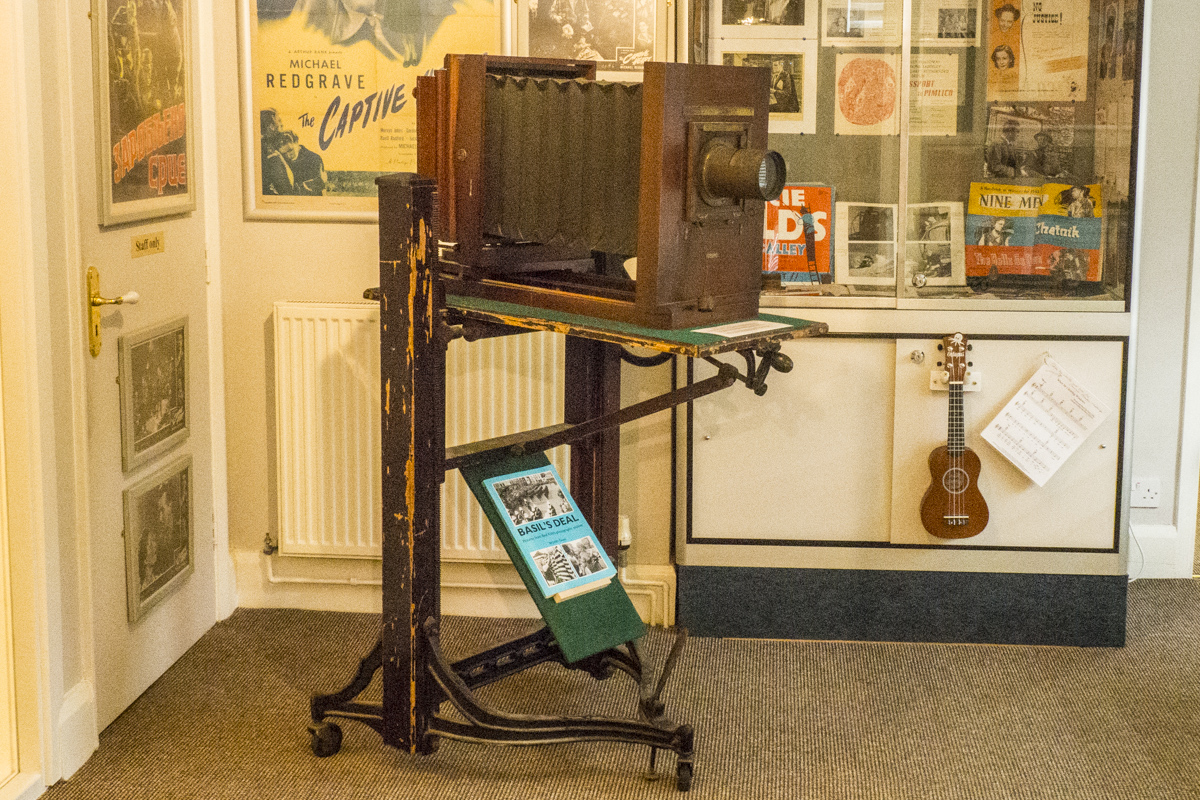
Exhibits in the Kent Moving Image Museum in Deal, Kent
Deal Castle
Deal Castle was built by Henry VIII between 1539 and 1540 as part of his programme to defend the eastern and southern coasts of England. Having renounced Catholicism, he was afraid England would be invaded by his old enemies, the Catholic countries of France and Spain as part of his coastal defences. Deal Castle was one of three the others being at Sandown (destroyed) and Walmer. They were known as the three Castles in the Downs. Any materials available were used to build them including fragments of monastic buildings destroyed during the Dissolution of the Monasteries.
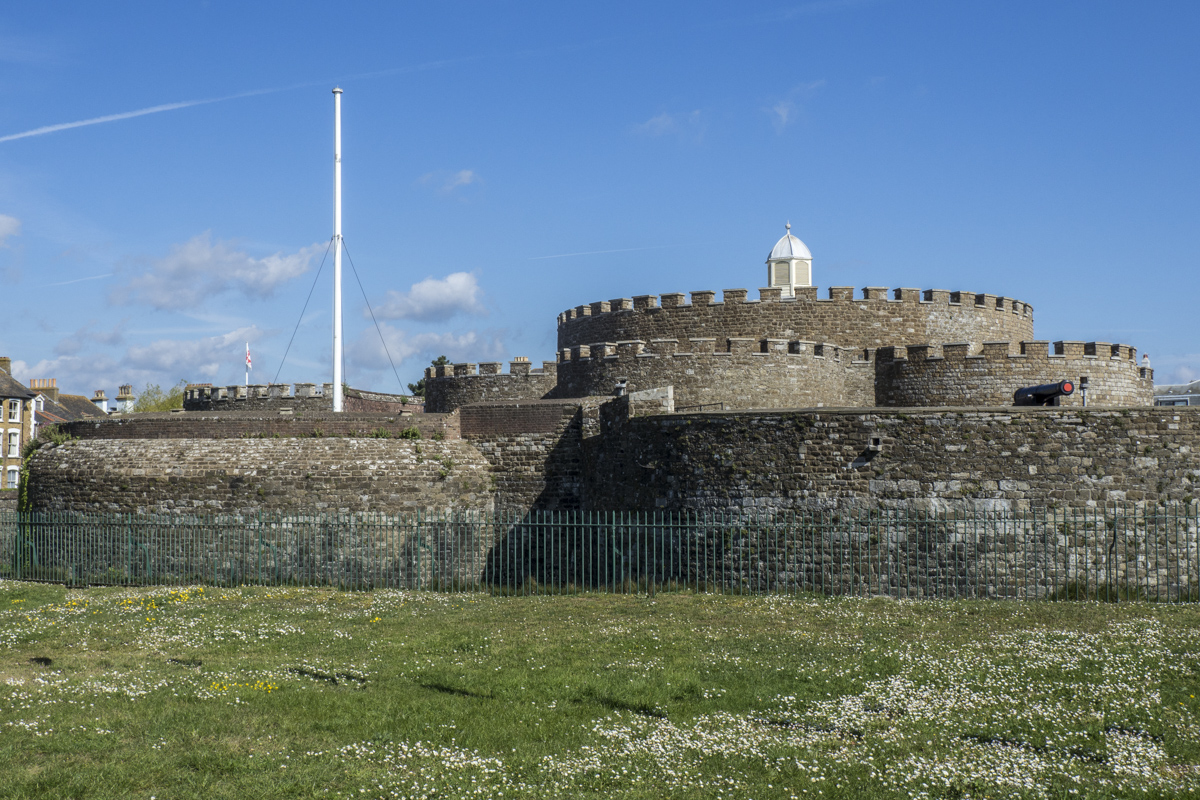
Deal Castle in Deal, Kent
As Deal Castle was designed to engage in short, aggressive battles against invaders it is very different from the traditional castle that was built to withstand long sieges. It was built low to reduce the target for guns yet designed to ensure a clear view for its own guns. Its rounded walls were designed to deflect cannon balls. Each castle accommodated a captain and his gunners in basic living quarters. Deal was the largest of the three with six large bastions for heavy guns and in between them six smaller bastions for hand guns. This design gives the castle the distinctive form of a Tudor Rose. Only once has this castle been drawn into a battle and that was during the Civil War in 1648. Deal Castle is one of the finest Tudor artillery castles in England and the whole castle is open to the public. Inside the castle there is a permanent exhibition about Henry VIII and his contribution to the defensive system of England.
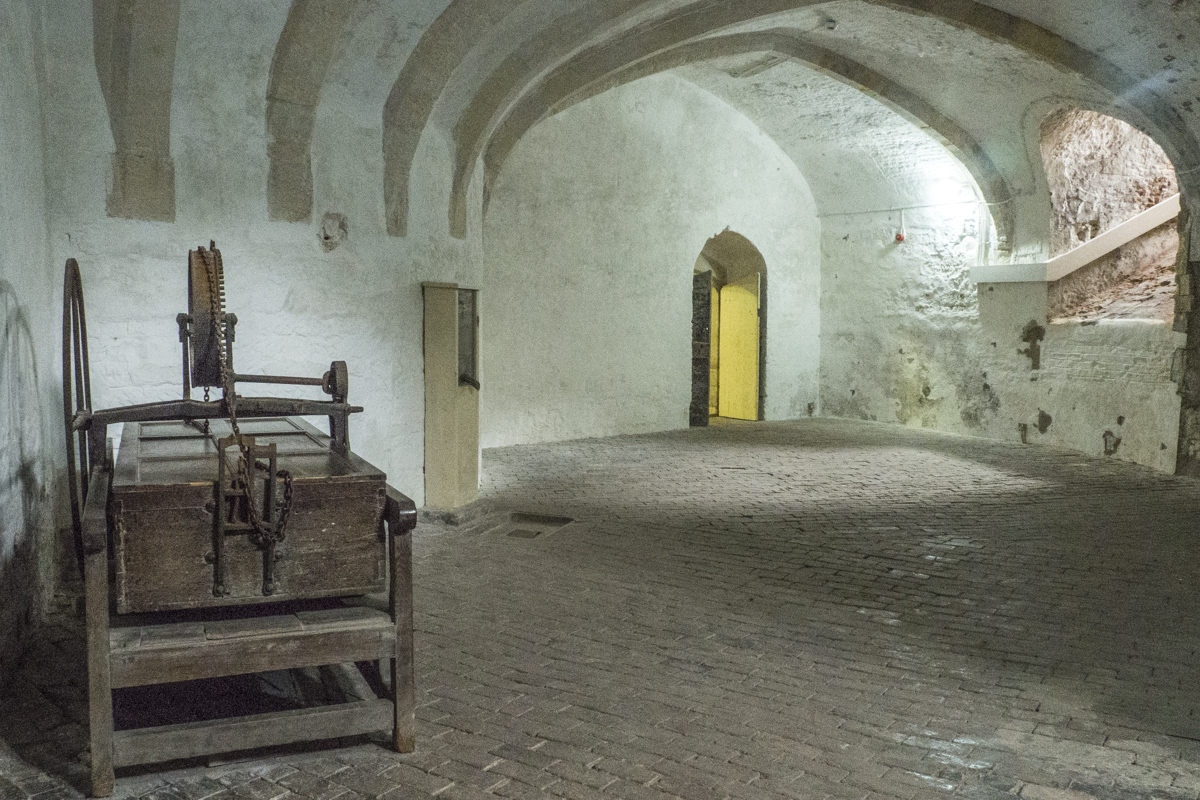
The Interior of Deal Castle in Deal in Kent
Walmer and the Strand
Just beyond Deal Castle is the Strand, a very popular walk by the sea past passing the Green and Walmer village and leading to Walmer Castle. A settlement developed here around military barracks that were built in 1795 for cavalry and infantry units. At the beginning of the nineteenth century the barracks were used by the Coastal Blockade until 1831 when they became a coastguard station. In the 1860s the whole complex given to the Royal Marines had returned to Deal which was one of their first stations when they were formed in 1664. The small village that developed around this base during the Victorian era became a fashionable place to live. Its lifeboat station, established in 1856, survives to this day but its boat has been replaced by an inflatable. Walmer became part of the Deal municipally in 1936. In 1993 the Memorial Bandstand was opened on the Green. It was built in memory of the eleven members of the Band of the Royal Marines School of Music who were killed on 22 September 1989 by an IRA bomb planted in the barracks.

Walmer Lifeboat Station in Deal, Kent
Walmer Castle
Walmer Castle was also built by Henry VIII in 1539-40. Like the other two Castles in the Downs it was never intended to be lived in but simple to defend the open beach from invasion. It would probably have suffered the same fate as Sandown Castle had it not been for the Duke of Dorset. When he became Lord Warden of the Cinque Ports in 1708 he added living accommodation to the castle. Walmer Castle became the official residence of the Lords Warden rather than Dover Castle and remains so today. Over the years it has been modified by a succession of Lords Warden into a distinguished and comfortable residence. The castle is now owned by English Heritage. It is open to the public except when the Lord Warden is in residence.
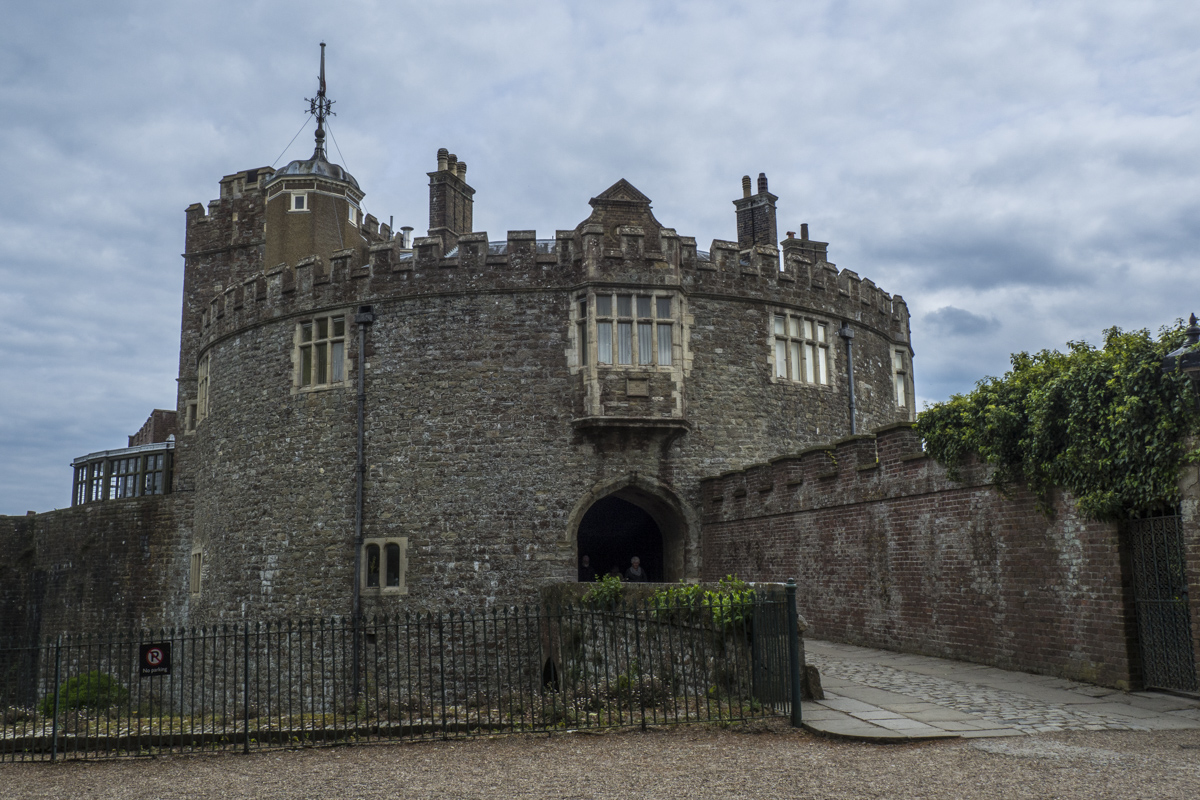
Walmer Castle in Deal, Kent
The castle is surrounded by eight acres of award-winning gardens, including the Broadwalk and the tranquil Queen Mothers Garden complete with a bronze corgi on one of its benches. The Glen, formerly a chalk quarry that was planted and then became overgrown has been restored and re-opened. A new natural play trail features hollow tree trunks to climb and wobbly bridges to walk cross. Refreshments are available at the Glasshouse Café in the wonderful kitchen garden and also in the Lord Warden’s tea room. I particularly enjoyed wandering through the deep, dry moat that has been converted into a lovely sunken garden.
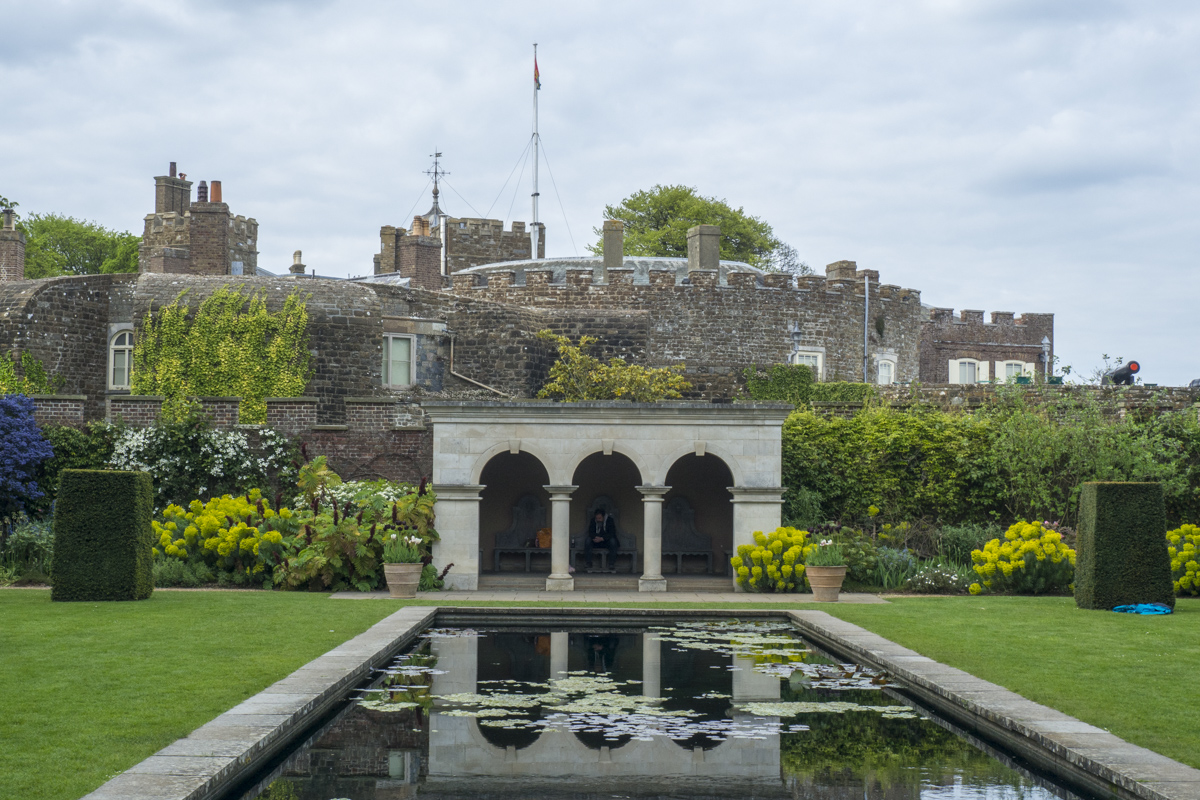
The Queen Mother’s Garden at Walmer Castle in Deal, Kent
Where to Stay
While visiting Deal I stayed at The Lodge at Prince’s Golf Club. Situated at the entrance to the golf course on the Bay of Sandwich the rooms overlook the shingle beach and the sea. I really appreciated the tranquility of this place after a day exploring the nearby towns. I enjoyed my very comfortable light, spacious room and early morning walks along the beach.
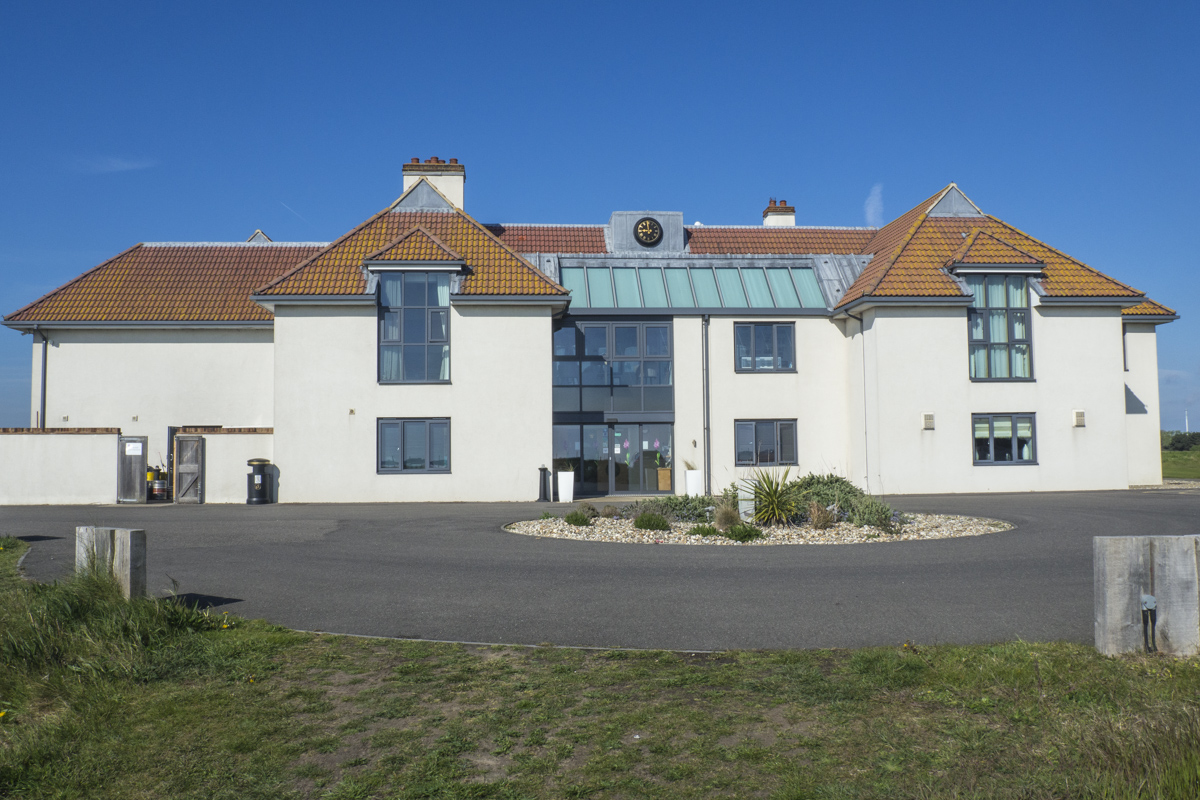
The Lodge at Prince’s Golf Club in Sandwich, Kent
Getting There
Regular train services operate from London St Pancras and London Victoria to Deal. It is also easy to get there by road thanks to the M20 that links into other motorways.
Available on GPSmyCity.com
This article is now featured on GPSmyCity. To download this article for offline reading or travel directions to the attractions highlighted in this article, go to Walking Tours in Deal on GPSmyCity
This article was based on the personal experience of Valery, an ExperiencedTraveller.